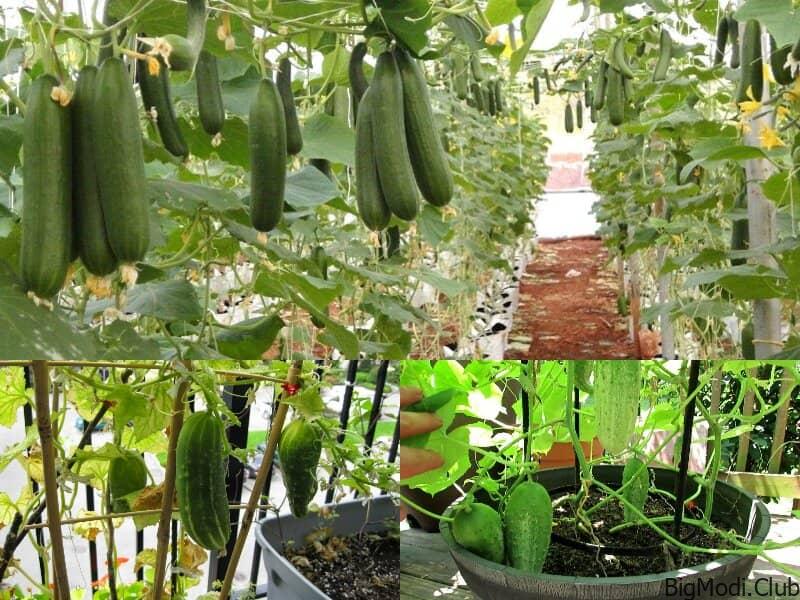Cucumbers are one of the most prolific vegetables you can grow, and there’s nothing quite like biting into a freshly picked, crunchy, and juicy cucumber from your garden. Over the years, I’ve learned a lot about growing cucumbers, from choosing the right variety to ensuring exceptional growth. Let me share what I’ve learned with you, so you can enjoy a bountiful cucumber harvest too.
Choosing the Right Cucumber Variety
Cucumbers come in various types, each suited for different purposes. Whether you’re looking for gherkins for pickling, slicing cucumbers for salads, or snack-sized varieties for lunchboxes, there’s a cucumber for you. There are also quirky varieties like lemon-shaped yellow cucumbers.
Most cucumbers are vining, but you can find compact, bushy types perfect for containers. Some varieties are ideal for greenhouses, while others thrive outdoors. Modern breeding has even produced varieties tolerant of cooler climates, making cucumbers accessible to gardeners in less-than-ideal conditions.
Pro Tip: Choose a variety that makes your life easier by selecting one with resistance to common diseases like powdery mildew or cucumber mosaic virus. Another great option is a parthenocarpic variety, which doesn’t require pollination to set fruit. These varieties often produce seedless fruits and are gynoecious, meaning they produce mainly female flowers, leading to more fruits for you to harvest!
Growing Cucumbers
Cucumbers grow quickly and can go from sowing to harvesting within two months under ideal conditions. Here’s how to start your cucumbers on the right foot:
Sowing Seeds: Sow cucumber seeds about three to four weeks before the last frost date. Cucumbers prefer nighttime temperatures above 50°F (10°C) and warmer daytime temperatures. Soak the seeds overnight in lukewarm water to prime them for germination.
Planting: Use small pots or chunky plug trays for sowing. You can sow one seed per pot to avoid wasting seeds if one doesn’t germinate. Sow the seeds about half an inch (1 cm) deep and keep them warm, ideally at 70-80°F (21-26°C). Germination is quicker when the soil is warm, so consider using a heat mat if necessary.
Transplanting: Once the seedlings are strong and the risk of frost has passed, you can transplant them outside. Harden off the plants by gradually acclimatizing them to outdoor conditions over a week.
Supporting Cucumber Growth
Cucumbers thrive in rich, fertile soil, so prepare your planting area with well-rotted manure or compost. To give your plants an extra boost, you can also add chicken manure pellets.
Supporting Vines: Vining cucumbers benefit from being trained off the ground. This reduces the risk of pests and diseases while improving air circulation. The simplest support system is sturdy string secured to a horizontal wire, but you can also use trellises or A-frame supports.
Watering: Cucumbers are about 96% water, so thorough watering is essential. Check the soil frequently, and water deeply when it feels dry. Mulching with grass clippings, straw, or compost helps retain moisture and keeps the soil cool.
Fertilizing: As cucumbers start to fruit, apply a liquid fertilizer high in potassium to encourage more flowers and fruits. A liquid tomato feed works well, or you can use a granular fertilizer as a top dressing.
Pruning and Harvesting
Pruning: Pruning cucumbers is similar to pruning vining tomatoes. Remove side shoots or suckers to keep the plants manageable. You can also remove the lowest leaves to reduce the risk of disease and improve air circulation.
Harvesting: Pick cucumbers while they’re young, firm, and green. Harvest in the morning when they’re cool, and be careful not to yank them off the vine. Frequent harvesting encourages more fruits, so check your plants daily.
Dealing with Common Issues
Bitter Fruits: Sometimes, cucumbers can develop a bitter taste due to stress from lack of water, extreme temperatures, or pollination of female flowers by male flowers. To avoid this, choose burpless varieties and water regularly. If you encounter bitter fruits, cut off the end closest to the stalk and peel the cucumber.
Pests and Diseases: Cucumber beetles are a common problem in North America. Protect your plants by starting them indoors and covering them with insect mesh. Powdery mildew is another issue, but you can combat it by spraying a solution of one part milk to three parts water on the leaves at the first sign of infection.
Extending the Growing Season
Cucumbers can lose their vigor as they age. In cooler climates like mine, one sowing is usually enough. However, if you live in a warmer climate with a longer growing season, consider making monthly sowings to replace older plants with new, vigorous ones.
Growing cucumbers is a rewarding experience, especially when you enjoy the fruits of your labor in salads, smoothies, or homemade pickles. With these tips, you’ll be well on your way to growing healthy, productive cucumber plants. Happy gardening!


